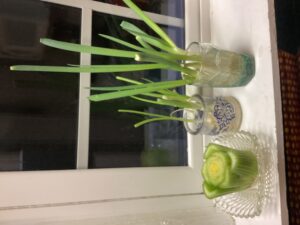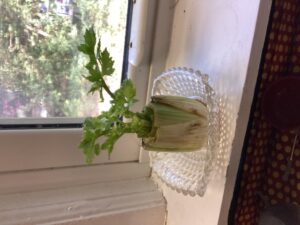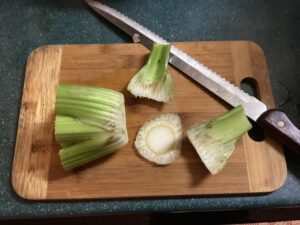Eat & Repeat: Kitchen Scrap Gardens
go.ncsu.edu/readext?924184
en Español / em Português
El inglés es el idioma de control de esta página. En la medida en que haya algún conflicto entre la traducción al inglés y la traducción, el inglés prevalece.
Al hacer clic en el enlace de traducción se activa un servicio de traducción gratuito para convertir la página al español. Al igual que con cualquier traducción por Internet, la conversión no es sensible al contexto y puede que no traduzca el texto en su significado original. NC State Extension no garantiza la exactitud del texto traducido. Por favor, tenga en cuenta que algunas aplicaciones y/o servicios pueden no funcionar como se espera cuando se traducen.
Português
Inglês é o idioma de controle desta página. Na medida que haja algum conflito entre o texto original em Inglês e a tradução, o Inglês prevalece.
Ao clicar no link de tradução, um serviço gratuito de tradução será ativado para converter a página para o Português. Como em qualquer tradução pela internet, a conversão não é sensivel ao contexto e pode não ocorrer a tradução para o significado orginal. O serviço de Extensão da Carolina do Norte (NC State Extension) não garante a exatidão do texto traduzido. Por favor, observe que algumas funções ou serviços podem não funcionar como esperado após a tradução.
English
English is the controlling language of this page. To the extent there is any conflict between the English text and the translation, English controls.
Clicking on the translation link activates a free translation service to convert the page to Spanish. As with any Internet translation, the conversion is not context-sensitive and may not translate the text to its original meaning. NC State Extension does not guarantee the accuracy of the translated text. Please note that some applications and/or services may not function as expected when translated.
Collapse ▲Are you eager to start planting your garden, but don’t have any seeds on hand? Look no further than your kitchen scraps! It is as simple as placing the root end of the vegetable or herb in a dish with shallow water. The only materials you need are a shallow bowl or plastic takeout container, tooth picks, water, and vegetable scraps. This is an excellent way to decrease your food waste, save money on groceries,
and learn about the life cycle of a plant.
Spring onions, shallots, celery, herbs, bulb fennel, many lettuces and leafy greens sprout quickly. To re-grow these vegetables, place the base of the bulb or stem in shallow water. You don’t want to completely submerge the vegetable, just about a centimeter of water in the dish is all you need. Sweet potatoes, potatoes, turnips, carrots, and beets may take a bit longer to sprout roots. Tooth picks can be helpful to suspend the vegetables over the water so they are not totally submerged in the water. For the potatoes, place the eye in the water. For the others, place the cut side down in the water, with the tops (where the leafy greens grow out) out of the water. Once your vegetable scraps are “planted” in the water, keep them in a sunny window or in a room with lots of bright light. As the water evaporates, refill
the dish with fresh water. After roots grow and green sprouts form on top, they are ready to be transplanted in your garden.
Written by Maren Jensen, Ability Garden Program Assistant

Kitchen Scraps, Celery, Spring onions

Celery base sprouting

How to prep celery to re-sprout



